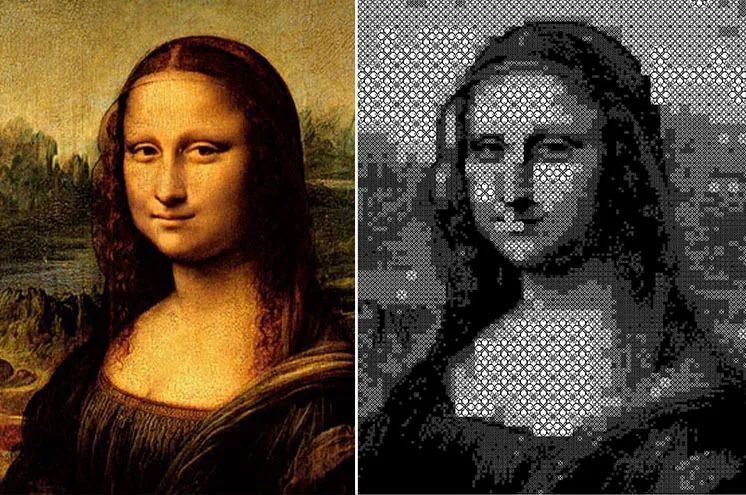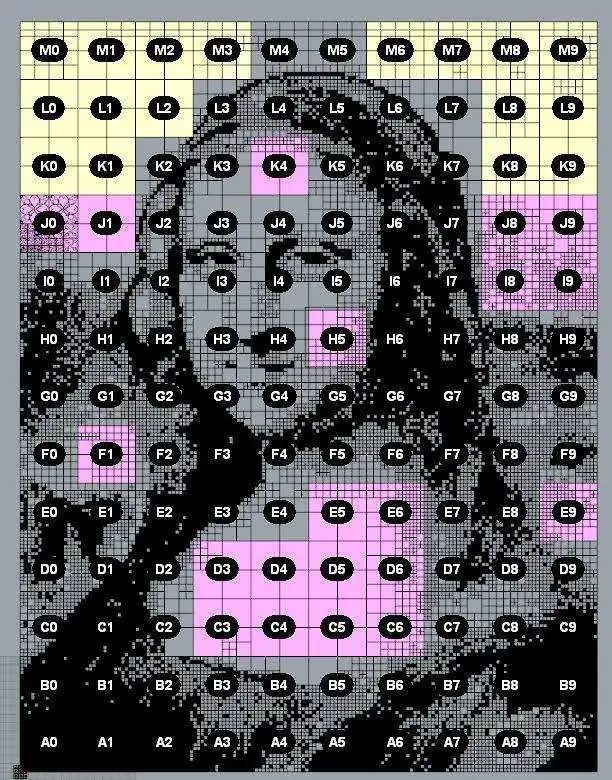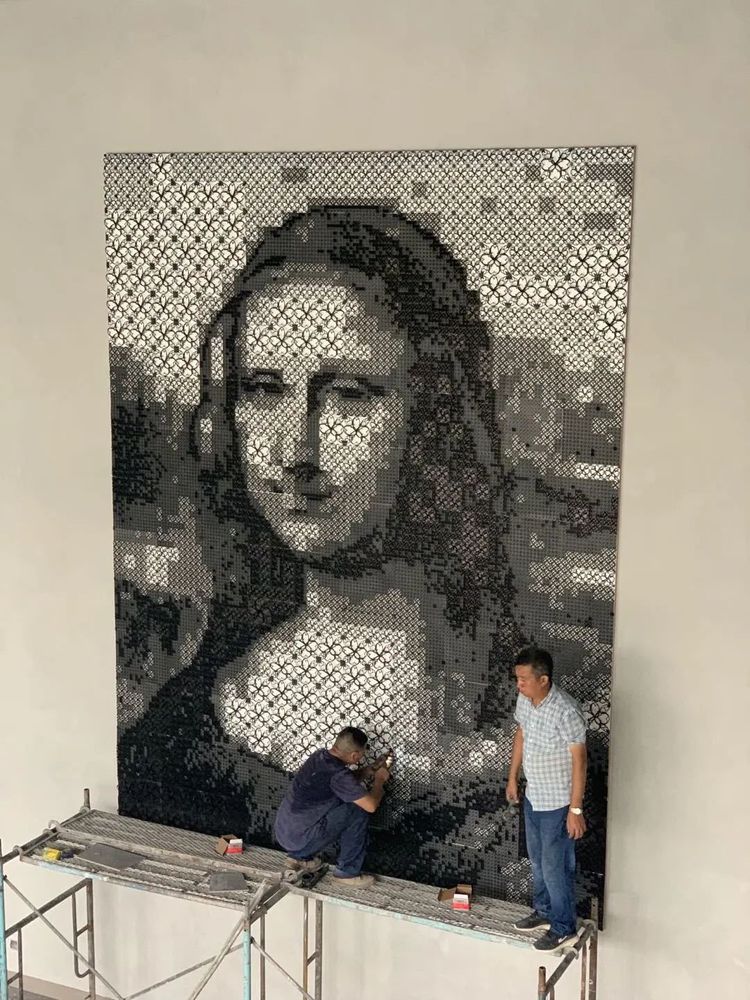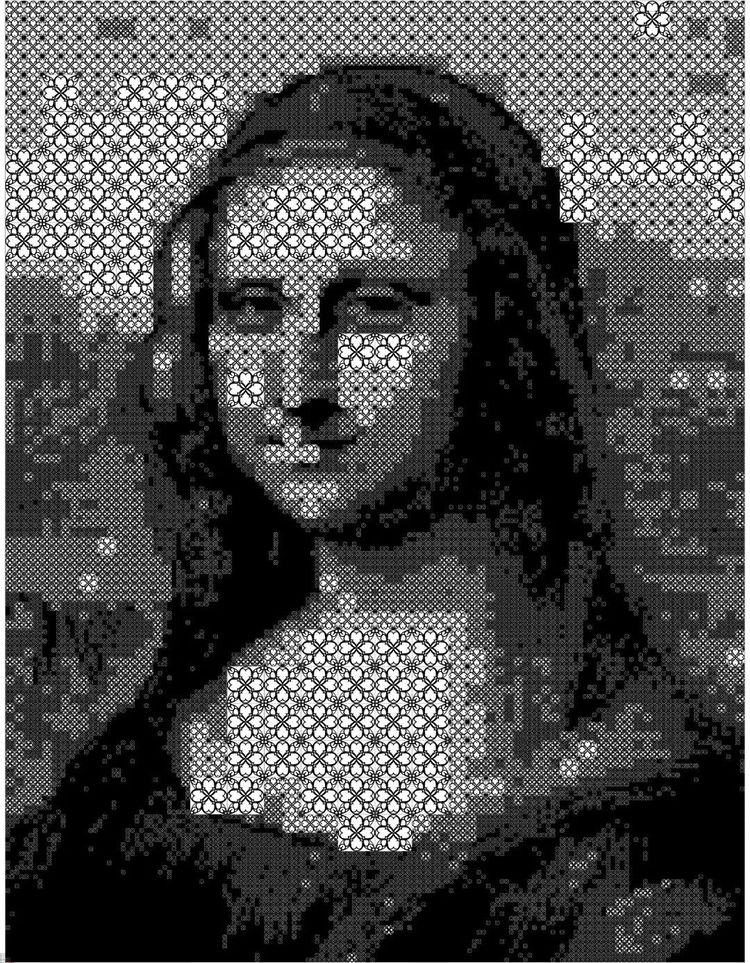3D printed Mona Lisa on display in Shanghai
In memory of the great Leonardo Da Vinci (April 15, 1452 — May 2, 1519), the Shanghai 3D Painting Cultural Museum presented one of his best known artworks–the Mona Lisa.With an overall size of 4550mm*3500mm*45mm, it is the largest 3D-printed pixel painting in the world.

In the creation of the massive Mona Lisa, staff at the museum turned the image into pixels which they later printed out and assembled. In order to do that, they used fractal artificial intelligence (AI) to optimize the image through automation, aided by computer modeling to create file formats that are compatible with 3D printing to produce the pixels in batches. The combination of AI and 3D printing technology represented the ideal solution to customization and helped decompose the original painting into the desired elements.
In this case, the original picture was divided into 130 pieces which, in turn, were further divided into five smaller units. Each one of the 130 pixels that make up the entire work was additively manufactured in nylon using selective laser sintering (SLS) technology. Furthermore, to help the team produce and put up the artwork correctly, each piece had a number printed in the upper left corner.

The inspiration of 3D printed digital pixel pictures originates from the pixel art movement in the 1970s. At first, this form of artistic expression was used in computer game design.The granular art style has since been used in many works of art, such as LEGO versions of classic and iconic pop art,and many artists have incorporated 3D printing technology to produce more personalized visual effects.
Recreations of famous artwork are not new.But with 3D printing technology, experts have been able to offer art lovers, students, and tourists new ways to appreciate centuries-old works, even helping towards good causes, like offering the visually impaired unique opportunities to experience masterworks by creating three-dimensional blueprints of two-dimensional images.

Built upon the former site of Shanghai’s No. 3 wool textile mill in the north Baoshan District in 2017, the museum has been transformed into the city’s first scientific and cultural complex featuring 3D printing technologies. Housing over a dozen artists’ workshops along with over 300 global companies engaged in 3D printing, intelligent micro-manufacturing, virtual reality, augmented reality, and artificial intelligence robotics, the site is much more than a place for tourists and visitors to explore. By purchasing 3D printing machines and other technology, the park has become a go-to site for startup companies to print out their designs. The museum doors are also usually open to companies that wish to introduce new technologies to clients. Asides from the exhibition hall, the museum is complete with a 3D printing research and scientific center, creative gallery, 3D sky garden, coffee shop, and 3D children’s activity center.

By showcasing the pixelated Mona Lisa, the museum is exploring ways to leverage 3D printing technology to enhance the art industry, moving away from conventional viewing experiences and introducing a different take on a universally recognized work. Museum experts tried to imitate in black and white Da Vinci’s s design and the imperceptible transitions between light and shade that leads to the unique coloring and optical illusions that continues to draw so much attention to the enigmatic smile of the subject in the painting. The pixelated accomplishment will make for a different and memorable experience to the visitors of the museum and a step forward for the Chinese 3D printing community as it continues to explore the capabilities of the technology.
Source: rtmworld.com; 3dprint.com;
Photo credit: 3dprint.com